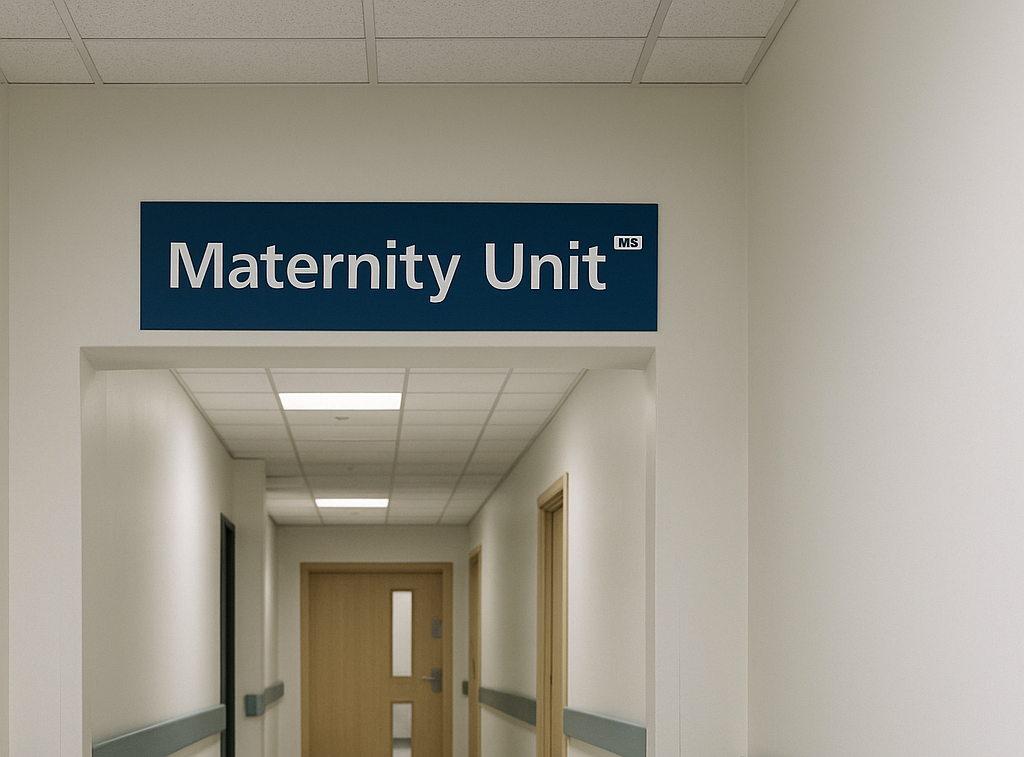More Than a Birth Plan: Maternity Safety as a Whole-System Priority
29 Jul 2025 |
| Share with

The NHS has faced few issues as persistently challenging, or as emotionally charged as maternity safety. Despite countless inquiries, national ambitions, and dedicated professionals, preventable harm continues. The Ockenden review, alongside earlier investigations like Morecambe Bay and Shrewsbury & Telford, revealed a recurring pattern: inadequate staffing, poor escalation, disjointed team working, and a failure to listen to women.
Today, those lessons remain painfully relevant. As of 2025, variation in maternal and neonatal outcomes persists across England. Staff shortages, data fragmentation, and cultural inertia continue to undermine safety ambitions. And while many Trusts have made progress, systemic pressure is hindering further improvement.
If the NHS is to move from tragedy to transformation, maternity must be treated not as a standalone service line, but as a bellwether of wider system health, one that requires bold leadership, workforce redesign, and equitable investment.
System Signals: What the Board Papers Reveal
In its May 2025 Board Meeting, NHS England reaffirmed maternity and neonatal safety as a strategic priority. The focus is shifting from reactive assurance to proactive improvement, grounded in:
- Equity of access: Addressing disparities in maternal outcomes across ethnic, socioeconomic, and geographic lines
- Workforce redesign: Ensuring safer staffing, skill mix, and improved working environments for midwives and obstetricians
- Digital enablement: Driving uptake of digital maternity toolkits, real-time surveillance, and personalised care planning
- Data transparency: Publishing outcomes data to drive local accountability and system learning
Yet, despite these intentions, progress remains uneven. The latest data from the Care Quality Commission shows that 37% of maternity services are rated as either ‘Requires Improvement’ or ‘Inadequate’ on safety. And maternity staff continue to report some of the highest levels of burnout, understaffing, and moral distress across the NHS workforce.
Midwifery Workforce: Still Under Pressure
The midwifery workforce is central to any safety strategy, yet it remains in crisis. The Royal College of Midwives (RCM) estimates a shortfall of over 2,500 midwives in England, with many existing staff citing unsustainable caseloads, poor work-life balance, and lack of professional development as reasons for leaving.
Despite targeted recruitment efforts, retention remains fragile. NHS Staff Survey data shows midwives report lower satisfaction with staffing levels, safety culture, and support from senior managers compared to many other roles. Meanwhile, student midwives face high attrition rates during training, and Band 6 midwives are frequently asked to step into Band 7 responsibilities without adequate progression or pay.
Without a stable, well-supported midwifery workforce, safety becomes a system aspiration, not a lived reality.
The Culture Factor: From Accountability to Psychological Safety
One of the starkest insights from the Ockenden review wasn’t clinical, it was cultural. In many of the Trusts examined, staff described a culture where concerns were ignored, voices were silenced, and errors were feared rather than learned from.
This cultural fragility is not unique to maternity, but its consequences are magnified here. Maternity services depend on multidisciplinary collaboration, rapid escalation, and emotionally intelligent leadership. When culture falters, safety follows.
To improve outcomes, NHS leaders must go beyond structural fixes. They must:
- Foster psychological safety across teams
- Support shared decision-making with women and birthing people
- Ensure non-hierarchical team functioning, especially in acute maternity units
- Embed compassionate leadership that prioritises staff wellbeing alongside patient care
Digital Tools & Data: Enablers, Not Substitutes
NHSE has rightly invested in digital maturity for maternity services. Programmes such as the Digital Maternity Programme, Electronic Personalised Care Plans, and Perinatal Surveillance Tools are designed to modernise care pathways and improve real-time decision-making.
Yet the digital divide remains real. Many providers still operate on fragmented systems with inconsistent data-sharing. And uptake of nationally endorsed toolkits remains patchy due to interoperability issues and competing IT priorities.
Technology will only improve safety if:
- It is embedded into clinical workflows
- Frontline staff are trained and supported in its use
- Leadership prioritises integration over innovation theatre
The recent expansion of the ‘What Good Looks Like’ framework for maternity digital maturity is a step forward, but its impact depends on local adoption and sustained investment.
Equity is Safety: The Case for Focused Investment
One of the most uncomfortable truths of maternity care in England is that outcomes vary widely based on ethnicity, postcode, and income.
Black women are still nearly four times more likely to die in childbirth than White women. Women from deprived areas are significantly more likely to experience preterm birth, stillbirth, or postnatal complications. These are not anomalies—they are systemic inequities.
Maternity safety cannot be disentangled from equity. And equity requires more than aspiration; it demands:
- Targeted investment in community midwifery
- Culturally competent care models
- Partnership with voluntary and community sector organisations
- Data monitoring that explicitly tracks and addresses disparity
ICSs have a pivotal role here. They must ensure equity audits aren’t just board papers, they must shape commissioning, workforce strategy, and patient engagement.
A Final Word from Altin Biba, MBA, AMBA, Chief Executive of ProMedical
Maternity is not just a service line. It is a measure of how well we listen, how well we lead, and how seriously we take the safety of women, babies, and the professionals who care for them.
The system has not ignored the problem. But it hasn’t solved it either. That next step, moving from reflection to redesign, demands that we centre workforce, culture, and equity as inseparable elements of maternity safety.
At ProMedical, we’ve been privileged to support midwifery services across the NHS during some of their most challenging periods. In one region, our midwives were formally recognised for their contribution to a Trust’s improved CQC rating, a quiet reminder that flexible workforce solutions, when values-led and well-supported, can play a meaningful role in service improvement. Done well, it benefits not just providers, but patients and families in profoundly important ways.
We remain committed to supporting care systems that are not only safe but just. Whether through midwifery workforce partnerships, equity-focused staffing models, or support for digital and data implementation, we aim to contribute with humility and purpose.
If the themes in this piece reflect your local pressures or ambitions, we welcome a strategic conversation.
References
- NHS England Board Papers, May 2025
- Ockenden Review Final Report (2022)
- CQC Maternity Ratings (2024/25)
- NHS Staff Survey 2024 – Maternity Workforce Deep Dive
- Royal College of Midwives (RCM) – State of Maternity Services Report (2025)
- NHSE What Good Looks Like – Maternity Digital Maturity Guide
- MBRRACE-UK Maternal Mortality Report (2023)
Leave a Comment
You must be logged in to post a comment.

29 Jul 2025 | Leave a comment
Share with socials